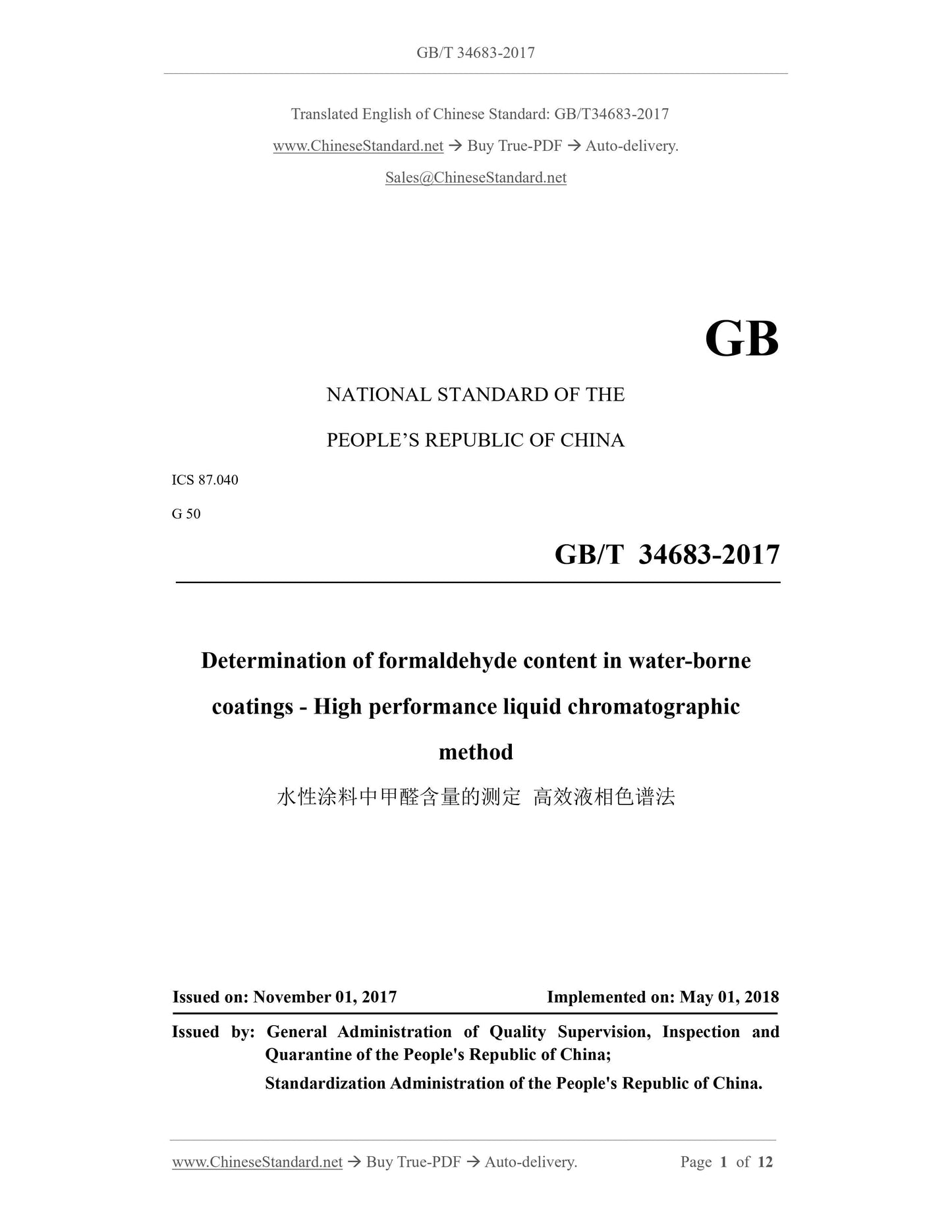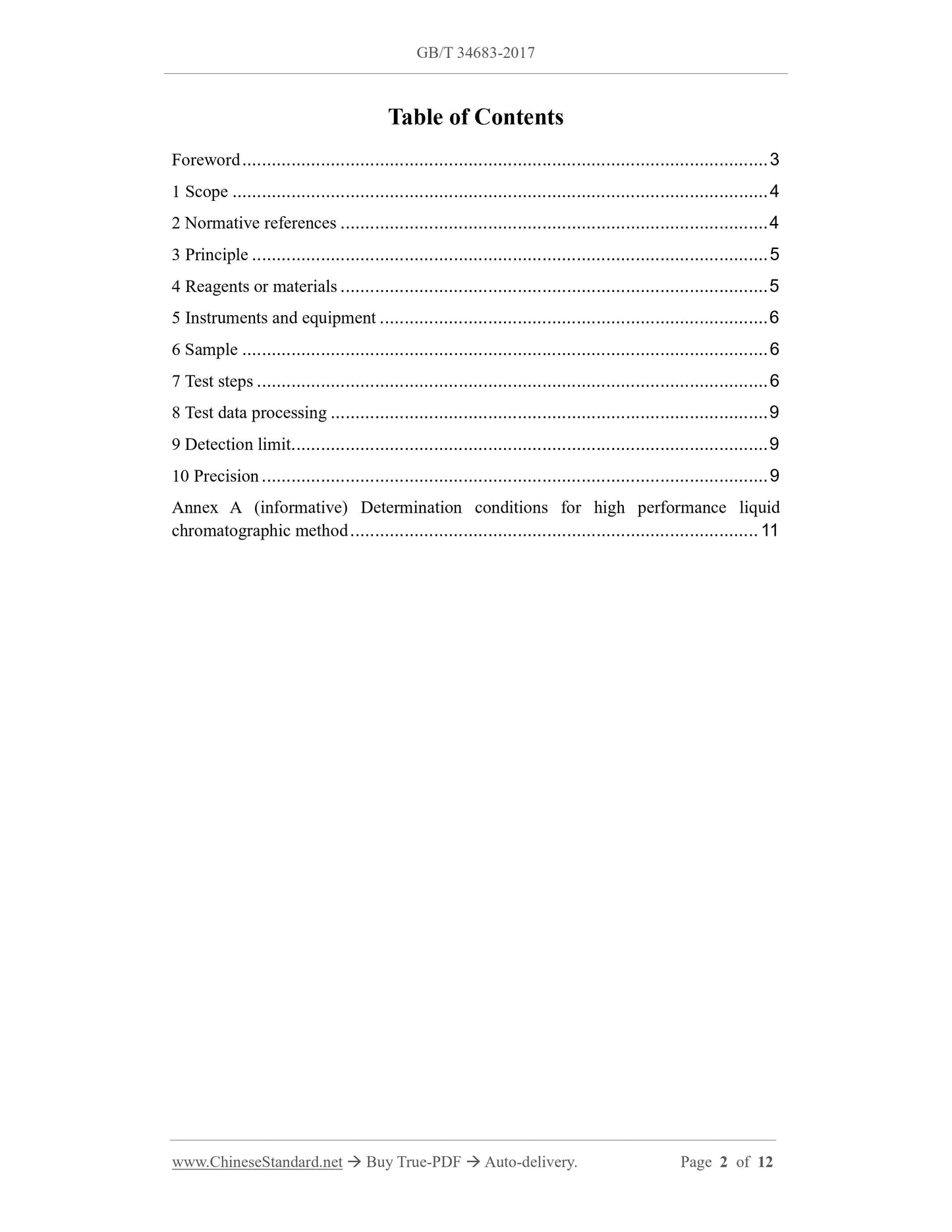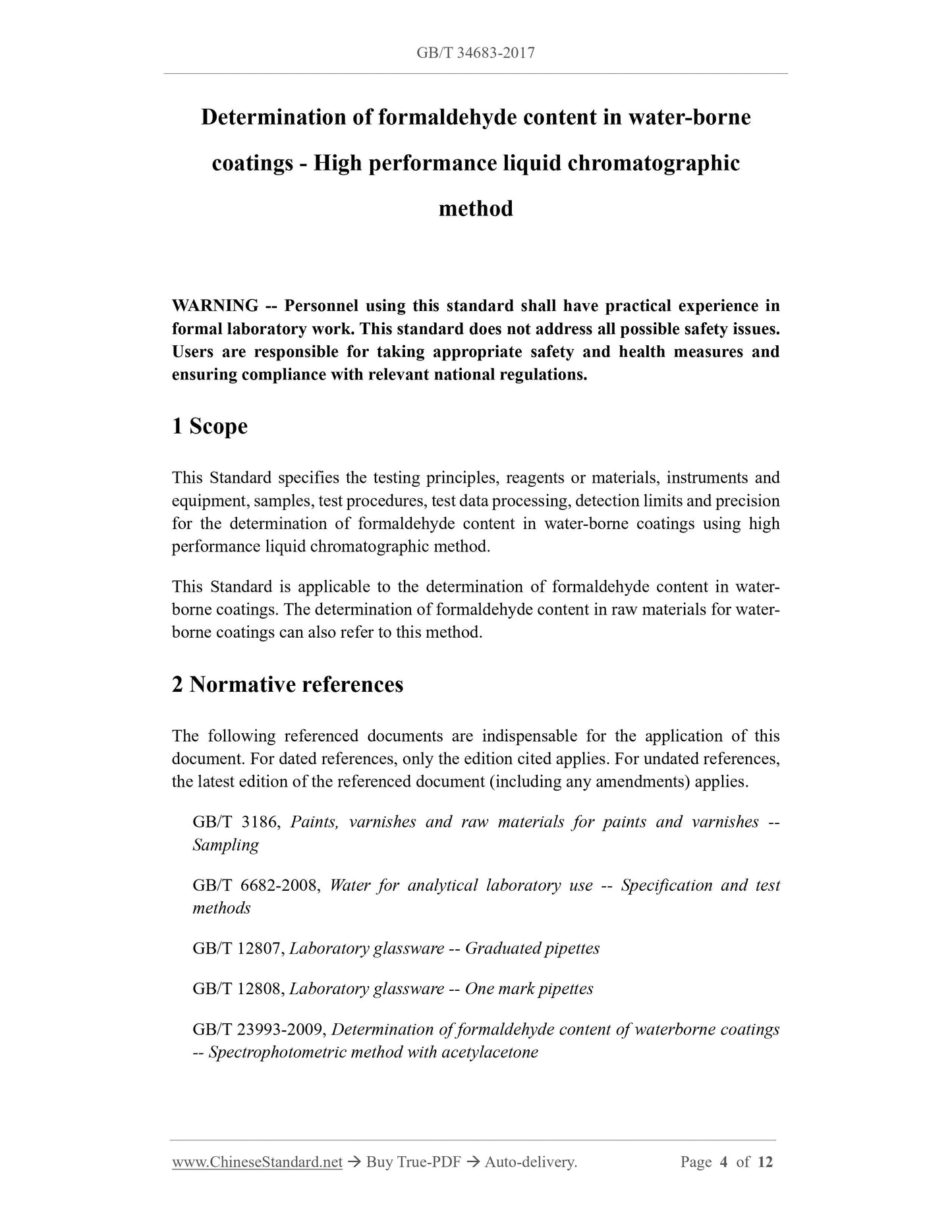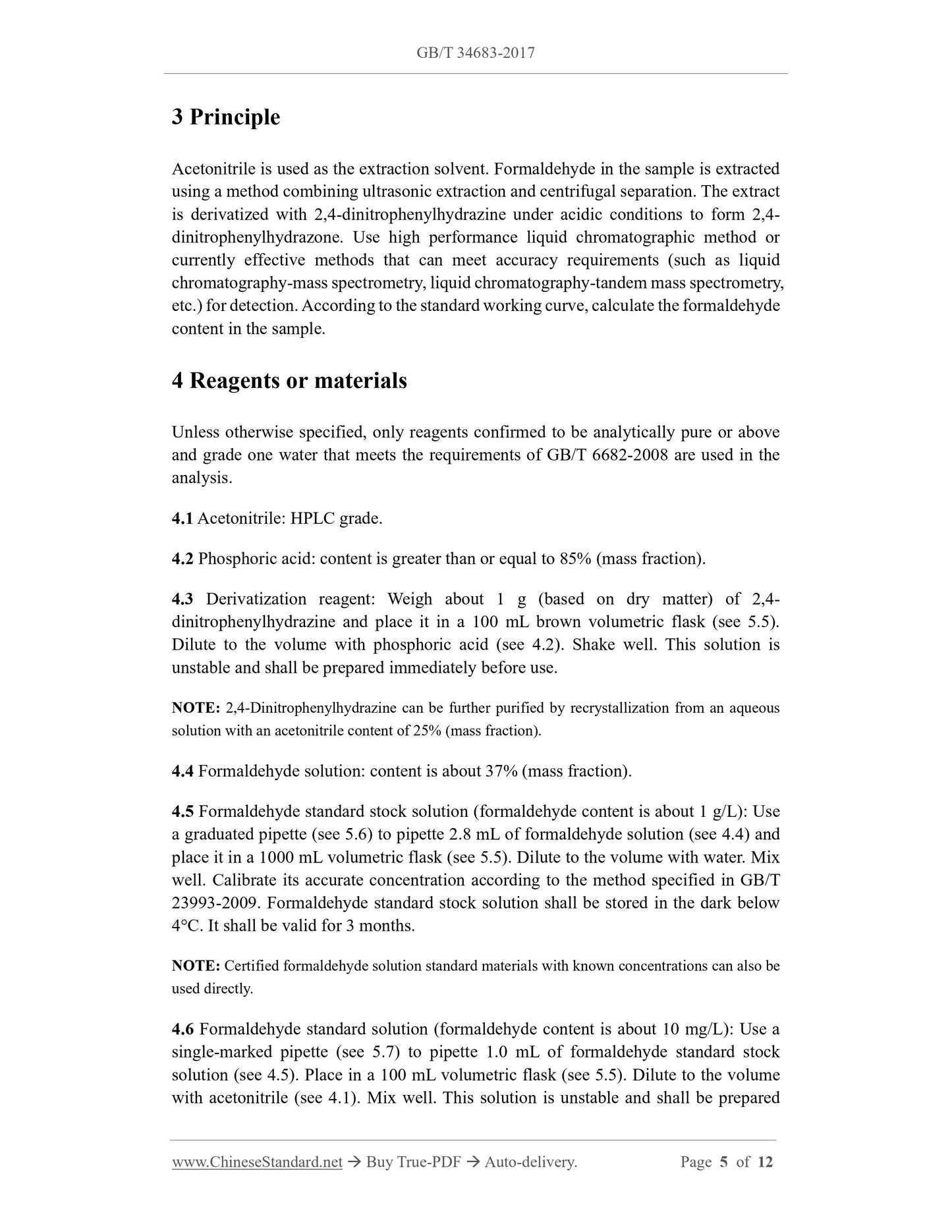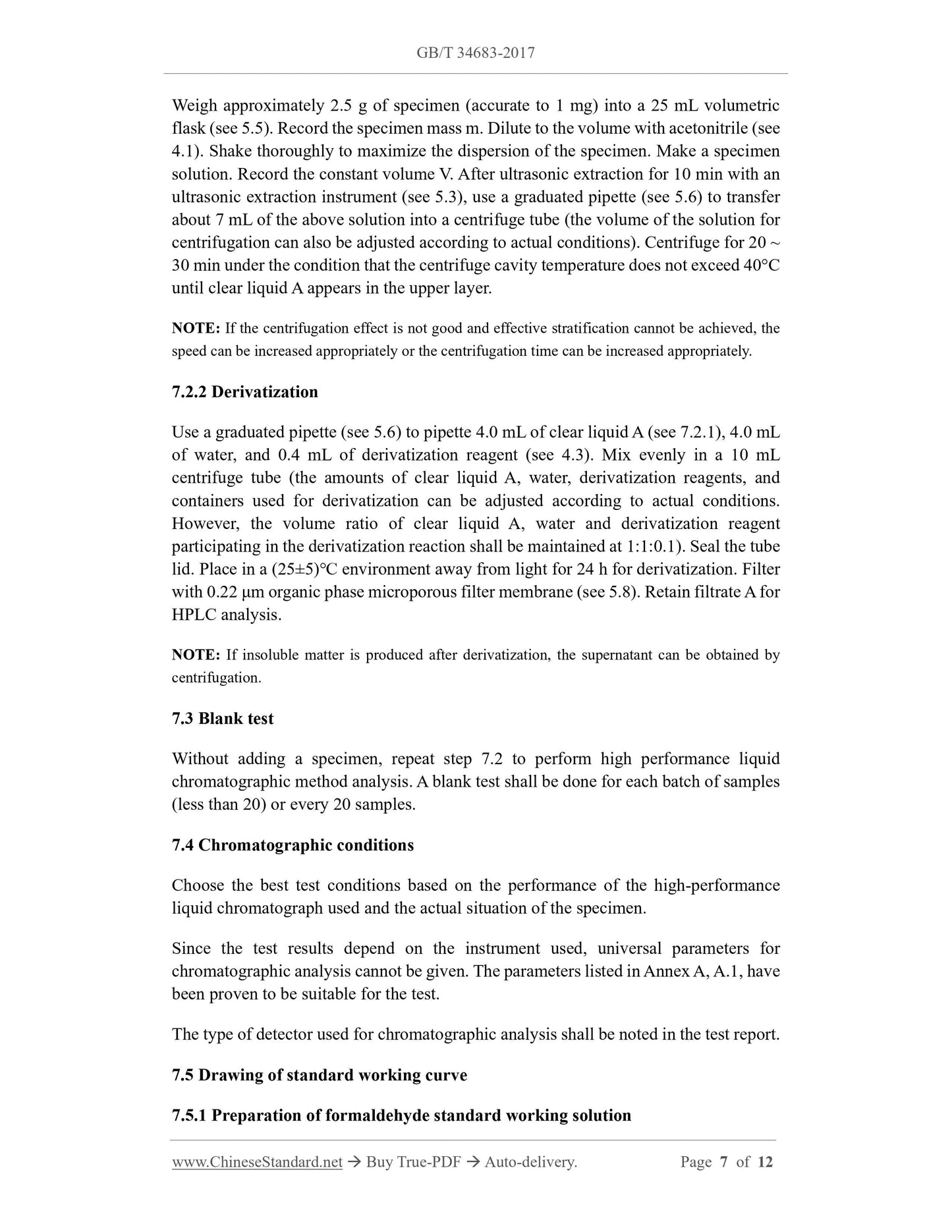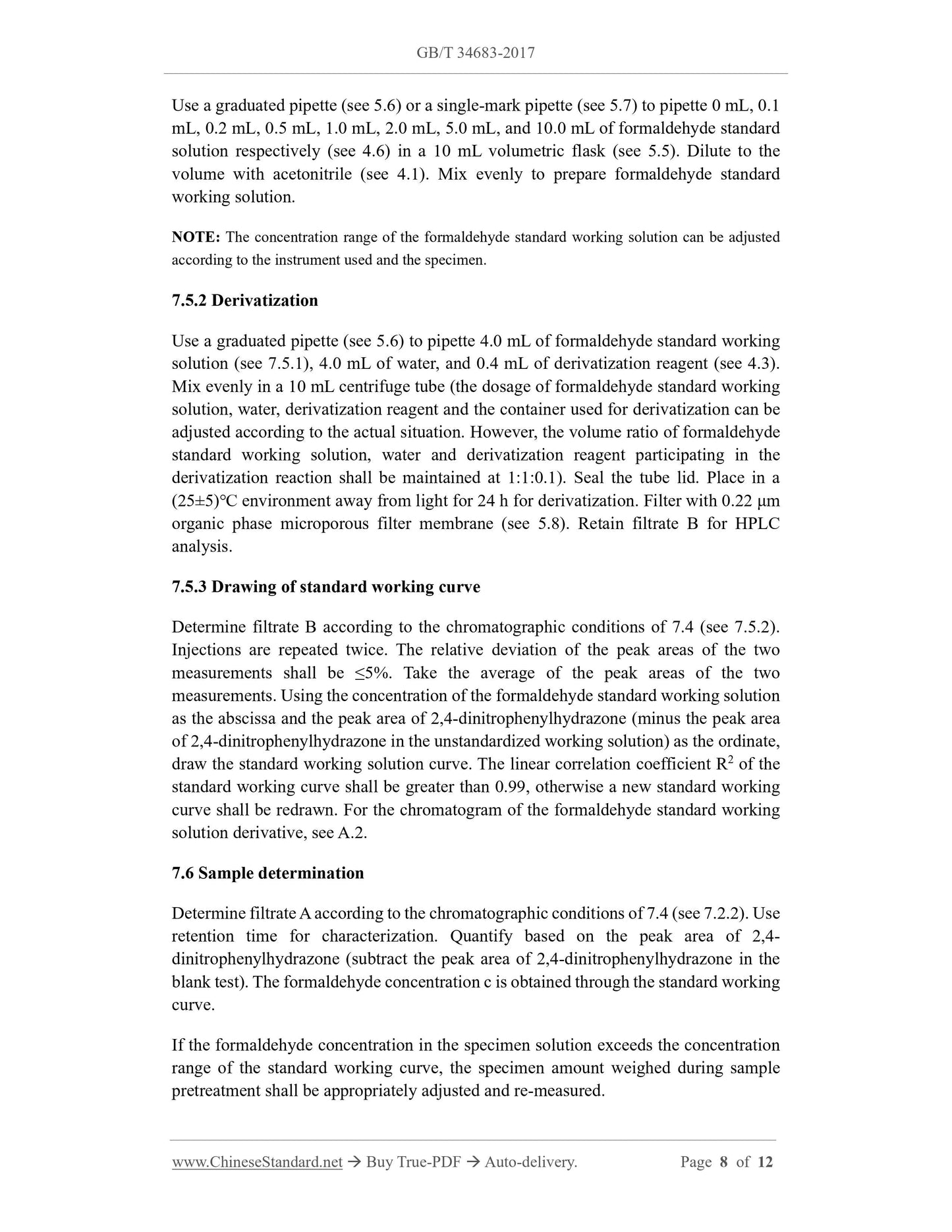1
/
of
6
www.ChineseStandard.us -- Field Test Asia Pte. Ltd.
GB/T 34683-2017 English PDF (GB/T34683-2017)
GB/T 34683-2017 English PDF (GB/T34683-2017)
Regular price
$165.00
Regular price
Sale price
$165.00
Unit price
/
per
Shipping calculated at checkout.
Couldn't load pickup availability
GB/T 34683-2017: Determination of formaldehyde content in water-borne coatings - High performance liquid chromatographic method
Delivery: 9 seconds. Download (and Email) true-PDF + Invoice.Get Quotation: Click GB/T 34683-2017 (Self-service in 1-minute)
Newer / historical versions: GB/T 34683-2017
Preview True-PDF
Scope
This Standard specifies the testing principles, reagents or materials, instruments andequipment, samples, test procedures, test data processing, detection limits and precision
for the determination of formaldehyde content in water-borne coatings using high
performance liquid chromatographic method.
This Standard is applicable to the determination of formaldehyde content in water-
borne coatings. The determination of formaldehyde content in raw materials for water-
borne coatings can also refer to this method.
Basic Data
| Standard ID | GB/T 34683-2017 (GB/T34683-2017) |
| Description (Translated English) | Determination of formaldehyde content in water-borne coatings - High performance liquid chromatographic method |
| Sector / Industry | National Standard (Recommended) |
| Classification of Chinese Standard | G50 |
| Classification of International Standard | 87.040 |
| Word Count Estimation | 10,136 |
| Date of Issue | 2017-11-01 |
| Date of Implementation | 2018-05-01 |
| Issuing agency(ies) | General Administration of Quality Supervision, Inspection and Quarantine of the People's Republic of China, Standardization Administration of the People's Republic of China |
Share
